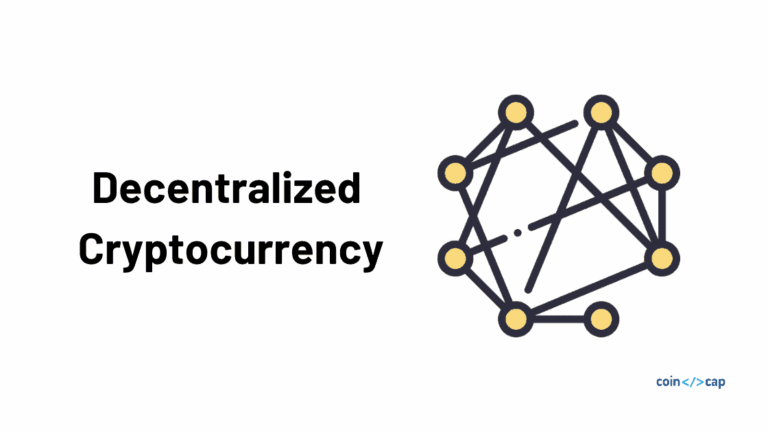One of the key selling points of cryptocurrencies is that they are decentralized. That is, they have no central authority. Instead, a large, distributed community controls the currency collectively.
The thing is, no cryptocurrency is entirely decentralized. There’s always some tradeoff between security, scalability, and decentralization. So, which are the most decentralized?
Centralized vs. Decentralized
Decentralization is the key difference between cryptocurrencies and fiat currencies.
Take the US dollar and Bitcoin as an example. The US dollar is a centralized currency. The US government has complete control over the USD and creates new US dollars whenever they want, decide on how the banks distribute them, and even monitor and restrict the use of the currency around the world.
With Bitcoin, it’s an entirely different story. No person or organization can willingly create new Bitcoins or decide on how it’s distributed, monitor, or restrict its use. The Bitcoin protocol controls the creation and distribution of new bitcoins.
Even an organization as powerful as the US government can’t censor Bitcoin transactions.
Changes to the Bitcoin network (and other decentralized networks) need to come through social and network consensus.
Even Bitcoin development has no centralized control.
Decentralization: Theory vs. Reality
In theory, Bitcoin and other crypto networks are very decentralized. But, in practice, they tend to become more centralized over time for a variety of reasons.
Bitcoin was designed so that anyone in the world could use their computer to start mining it. As Satoshi Nakamoto said, “Proof-of-work is essentially one-CPU-one-vote.”
This would have made the network very decentralized. But, today, without ASIC machines, Bitcoin mining is not possible. NStandardcomputers can’t mine Bitcoin today because of high mining difficulty.
Besides, Bitcoin mining is also very energy-intensive.
These two factors mean that the most competitive miners are the ones with access to cheap ASIC Bitcoin mining hardware and affordable electricity.
It has led to the concentration of Bitcoin mining in places like China, where computing hardware and cheap electricity are easy to come by.
This means that, in reality, control over the Bitcoin network has become quite centralized in just a few large mining ‘pools.’ These groups have an outsized influence over the Bitcoin network compared to regular users.
This type of inadvertent centralization happens in most blockchain networks. As a result, there is a debate as to which networks are genuinely decentralized and which aren’t.
Be very wary of so-called “highly decentralized” networks that are relatively small in size.
While they might work in theory, but haven’t yet proved to maintain this in the real world with thousands or millions of daily users.
So, here’s our list of the most decentralized cryptocurrencies, and how they’ve dealt with the problems of centralization.
1. Bitcoin
Despite the problem of mining centralization described above, Bitcoin remains the most practically decentralized network in the world. Even large mining pools wouldn’t be able to exercise control over the Bitcoin network. The main reason economic incentives and the network size. It’s still by far the largest network in the world with a large number of miners.
Moreover, the number of nodes (devices running Bitcoin client) on the Bitcoin network is estimated by more than 10 thousand. It makes the Bitcoin network harder to takeover and solid enough to be called architecturally decentralized.
One fundamental problem with decentralized networks is the idea of a 51% attack. It refers to one entity gaining control of 51% mining power of the network.
If this happened, the attacker could, in theory, do all kinds of things, including giving themselves funds, censoring transactions etc. A 51% attack is the key vulnerability of any distributed network. If it’s relatively easy to conduct a 51% attack and take control of a network (as it works in the case with many smaller cryptocurrency networks), then the network isn’t decentralized.
With Bitcoin, it would almost be impossible for anyone to conduct such an attack. There wouldn’t be enough spare ASIC mining hardware and electricity availability to conduct a 51% attack, even for a short amount of time. The sheer size of the Bitcoin network makes it more robust to centralization.
2. Ethereum
Ethereum is another highly decentralized network. In fact, some studies even suggest that Ethereum is even more decentralized than Bitcoin. Such a suggestion is based on a principle that, if put quite simple, proclaims that the more nodes the network have, the more decentralized it is.
The Ethereum network has approximately 7000 nodes. So, we can say Bitcoin is in a better position when it comes to architecture decentralization.
On the other hand, Ethereum has a significant weak point in the form of low political decentralization. There are three operators that have the power to control a large portion of created blocks.
3. EOS
Another slightly more controversial network is EOS. It uses a different consensus algorithm called “Delegated Proof of Stake (DPoS)”.
In terms of Architectural decentralization, EOS is rated much lower compared to coins, described above. The numbers need no additional explanations: while Bitcoin and Ethereum networks chains are powered by thousands of nodes, there are 21 nodes on the EOS network.
EOS CTO, Dan Larimer, says that Proof of Work-based decentralized networks like Bitcoin will inevitably become centralized. In his DPoS system, network token holders vote on who should be able to mine blocks of the network. Yes, this system leads to just 20 mining groups creating all of the blocks for the entire network. But, the process is very transparent and everyone gets to vote. If a miner gets too big or becomes too powerful, they can easily be voted out by everyone else.
Interesting times ahead
Decentralization is one of the core issues of the crypto world. As networks grow and the technology matures, we’ll find out which networks can remain decentralized, and which ones creep towards centralization.
This article is contributed by Mary Ann Callahan. Mary is an expert in blockchain and cryptocurrency-related subject works as a Journalist at Cex.io – cryptocurrency exchange.


